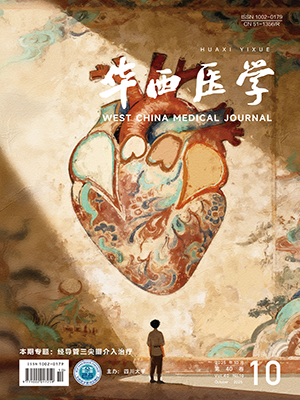| 1. |
程钢炜, 赵家良.多发性硬化的临床特点与眼部表现[J].中国实用眼科杂志, 2003, 21(10):750-754.
|
| 2. |
Odom JV, Bach M, Brigell M, et al. ISCEV standard for clinical visual evoked potentials (2009 update)[J]. Doc Ophthalmol, 2010, 120(1):111-119.
|
| 3. |
吴乐正, 吴德正.临床视觉电生理学[M].北京:科学出版社, 1999:322-324.
|
| 4. |
徐益华.视觉诱发电位检查的临床应用[J].中国医药指南, 2013, 11(7):526-527.
|
| 5. |
欧阳永斌, 胡丹.视光学的几个基本概念浅析[J].中国眼镜科技杂志, 2007(7):55-57.
|
| 6. |
张晓君.视神经炎与多发性硬化[J].中国神经免疫学和神经病学杂志, 2010, 17(1):19-21.
|
| 7. |
唐维强, 魏世辉.多发性硬化的眼部表现分析[C]//中国眼底病论坛·全国眼底病专题学术研讨会论文汇编[C].成都:中华眼底病杂志, 2008:26.
|
| 8. |
王富彬, 张丽君.图形VEP对视功能正常的多发性硬化症检测价值[J].临床眼科杂志, 2003, 11(4):347-348.
|
| 9. |
冼珊, 陈健梅, 梁少辉, 等.诱发电位在多发性硬化诊断中的应用[J].现代电生理学杂志, 2008, 15(1):17-18.
|
| 10. |
Kothari R, Singh S, Singh R, et al. Influence of visual angle on pattern reversal visual evoked potentials[J]. Oman J Ophthalmol, 2014, 7(3):120-125.
|
| 11. |
Schlaeger R, D'souza M, Schindler C, et al. Prediction of long-term disability in multiple sclerosis[J]. Mult Scler, 2012, 18(1):31-38.
|
| 12. |
刘锐, 张作明.视觉诱发电位检查在多发性硬化诊治中的价值[J].国际眼科纵览, 2012, 36(2):138-142.
|
| 13. |
Tasdemir N, Karaca EE, Aydin E, et al. Multiple sclerosis:relationship between cytokines, MRI lesion burden, visual evoked potential and disability scores[J]. Eur J of General Med, 2010, 7(2):167-173.
|
| 14. |
刘川, 王淳, 冯芹, 等. 30例多发性硬化患者视诱发电位检测[J].中国循证医学杂志, 2008, 8(10):901-902.
|
| 15. |
Grecescu M. Optical coherence tomography versus visual evoked potential in detecting subclinical visual impairment in multiple sclerosis[J]. J Med Life, 2013, 7(4):538-541.
|




